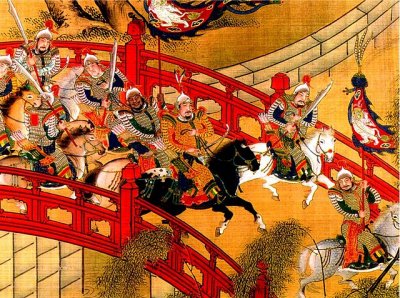Ming Dynasty Military
 During the Ming Dynasty, soldiers had one of lowest social standings. Unlike the western armies, being a soldier in the Ming Dynasty military was an inherited job and they came from a professional warrior class. Due to the low social status, the morale of the troops was very low and the motivation was just survival.
During the Ming Dynasty, soldiers had one of lowest social standings. Unlike the western armies, being a soldier in the Ming Dynasty military was an inherited job and they came from a professional warrior class. Due to the low social status, the morale of the troops was very low and the motivation was just survival.
Soldiers by Birth
The system of inherited soldiers had an inherent advantage. The causalities could easily be replaced. In case a soldier died in battle, his family was expected to provide one of its able-bodied members as a replacement.
If the family did not provide a replacement, it would lose its livelihood and often become beggars. In some cases, Ming Dynasty soldiers were even treated as cannon fodder.
Military Composition
The Ming infantry had a company that consisted of 112 men. This was similar to their European counterparts. The men were essentially grouped in administrative units that were made up of ordinary and specialist soldiers and another 40% were armed with long-range weapons, such as crossbows, bows, and firearms of some kind. The remaining 20% bore swords and shields.
Military Equipment
The Ming dynasty cavalry was not heavily equipped. They only had archers on horses and lancers with shields. At first, this tactic paid off, but later, the advantage greatly declined due to better strategies adopted by their enemies. The cavalry carried sabers but never used them. The horse archers were ineffective and vulnerable at close range. The lancers relied on charging to break enemy formations and retreated if they failed.
Military Flaws
One of the notable features of the Ming Dynasty military was its centralized planning. The entire army would be re-equipped and re-trained for a certain campaign. This caused the military to have lots of bureaucracy and therefore did not respond quickly and effectively to an immediate threat. Using troops for non-military purposes further reduced their battle readiness and military prowess.
